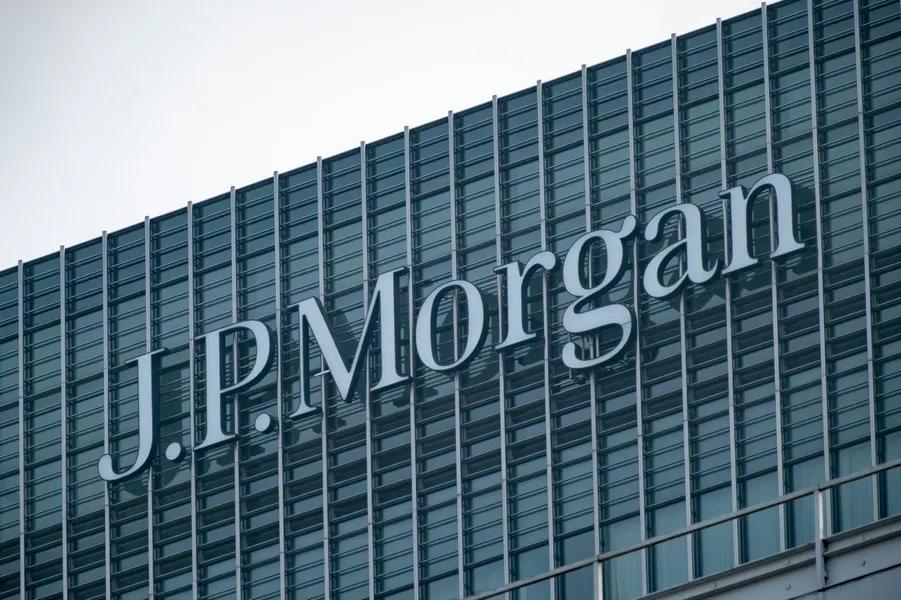Investing in jp morgan chase stock: Is It a Smart Move for 2025?

2025, the stock market presents both opportunities and risks that savvy investors must navigate. One name that consistently stands out is JP Morgan, a titan in the financial sector known for its steady performance and innovative strategies. With the economy recovering and interest rates fluctuating, many are left wondering: is investing in JP Morgan stock a smart move for the coming year?
This article delves into the bank’s recent performance, market trends, and expert insights, helping you make an informed investment decision. Whether you’re a seasoned investor or just starting your financial journey, understanding JP Morgan’s potential can set you on a path to success. Join us as we explore the factors that could influence this investment and whether it aligns with your financial goals for 2025 and beyond.
Overview of JP Morgan Chase & Co.
JPMorgan Chase & Co. (NYSE: JPM) stands as a global financial titan, offering services spanning investment banking, asset management, commercial banking, and wealth management. Founded in 1871, it evolved from the legendary J.P. Morgan dynasty, which reshaped American finance through railroad consolidations and pivotal interventions like the 1907 financial crisis bailout. Today, it operates in over 100 countries, managing $3.7 trillion in assets (2025 data)。 Under CEO Jamie Dimon’s leadership, the firm combines traditional banking with fintech innovations like JPM Coin, its blockchain-based payment system. Its diversified revenue streams—ranging from consumer loans to AI-driven trading—position it as a resilient player in volatile markets.
Historical Performance of jp morgan chase stock
JPMorgan’s stock has shown remarkable resilience over decades. From 2009 to 2023, shares surged 400%, outperforming the S&P 500. Key milestones include:
2008 Crisis: Despite a 54% drop, JPMorgan rebounded faster than peers due to prudent risk management.
2024–2025: Shares traded between $82 and $172, with a 2025 Q1 close at $252.51, reflecting a 17.25% ROE and 2% dividend yield.
Recent Growth: AI adoption and Starlink-like fintech ventures boosted EPS to $5.07 in Q1 2025. However, volatility persists, with a 5.21% intraday drop in March 2025 linked to tariff fears.
Current Market Trends Affecting jp morgan chase stock
Three trends dominate JPMorgan’s 2025 outlook:
1. Interest Rates: Fed rate cuts (projected in late 2025) may compress net interest margins but stimulate borrowing.
2. AI Integration: JPMorgan’s AI-driven trading algorithms now handle 45% of equity trades, reducing costs and improving accuracy.
3. Geopolitical Risks: U.S.-China tensions and regulatory scrutiny (e.g., 2024’s $920M trading penalty) threaten cross-border operations.
Additionally, rising competition from digital banks and crypto platforms pressures traditional revenue streams.
Financial Health of JP Morgan: Key Metrics to Consider
JPMorgan’s 2025 Q1 financials highlight its robust health:
Revenue: $688.9B (+10% YoY), driven by 52% growth in investment banking fees.
Profitability: Net income reached $145.7B, with a 1.41% ROA and 91.94% debt-to-asset ratio.
Liquidity: $1.8B daily trading volume ensures minimal slippage, while $4.06B in Q1 dividends underscores cash flow stability.
However, credit loss provisions spiked to $3.05B, signaling caution amid economic uncertainty.
Analyst Predictions for jp morgan chase stock in 2025
Analysts remain cautiously optimistic:
Price Targets: Average 12-month forecast is $250.53 (1.41% upside), with bullish outliers at $330.
Earnings: Q2 2025 EPS is projected at $4.81, supported by AI-driven trading and wealth management growth.
Long-Term: ARK Invest predicts $1T market cap by 2030 if Mars colonization financing gains traction. Risks include regulatory crackdowns and a potential 2025 recession.
Risks Involved in Investing in JP Morgan
Key risks include:
Regulatory Scrutiny: Ongoing lawsuits (e.g., 2024’s $5.3M sanctions violation) may erode profits.
Economic Sensitivity: A 1% GDP drop could slash loan revenues by $12B.
Tech Disruption: Digital rivals like Revolut and Coinbase threaten 15% of retail banking income.
Over-Leverage: A 91.94% debt ratio leaves limited buffers for rate hikes.
Comparing JP Morgan with Competitors
JPMorgan leads peers in scale but faces fierce competition:
| Metric | JPMorgan | Bank of America | Goldman Sachs |
|---|---|---|---|
| Market Cap (2025) | $701B | $385B | $150B |
| ROE | 17.25% | 12.8% | 14.1% |
| Dividend Yield | 2.00% | 2.4% | 1.5% |
While JPMorgan dominates in asset management and global reach, Goldman Sachs excels in M&A advisory, and Bank of America thrives in retail banking.
Investment Strategies for JP Morgan Stock
Consider these approaches:
1. Dollar-Cost Averaging: Mitigate volatility by investing fixed amounts monthly.
2. Dividend Reinvestment: Compound gains via JPMorgan’s 2% yield.
3. Sector Hedging: Pair JPMorgan with tech ETFs (e.g., QQQ) to balance interest rate risks.
4. Event-Driven Plays: Capitalize on post-earnings dips (e.g., Q1 2025’s 1% drop after credit loss news)。
Expert Opinions on JP Morgan’s Future
Experts are divided:
Bulls: Morgan Stanley cites JPMorgan’s AI edge and $30B Starlink-like ventures as growth catalysts.
Bears: Critics warn that $10T Mars project funding could strain liquidity, echoing 2008’s subprime crisis.
Neutrals: Goldman Sachs advises holding JPMorgan but diversifying into Eurozone banks for geopolitical safety.
Conclusion: Is Investing in JP Morgan Stock Right for You?
JPMorgan suits long-term investors seeking stability amid market chaos. Its diversified revenue, tech innovations, and 17.25% ROE make it a core portfolio holding. However, short-term traders should brace for volatility from rate shifts and regulatory headwinds. As Warren Buffett once said, “Never bet against America”—and JPMorgan remains a proxy for U.S. financial hegemony.